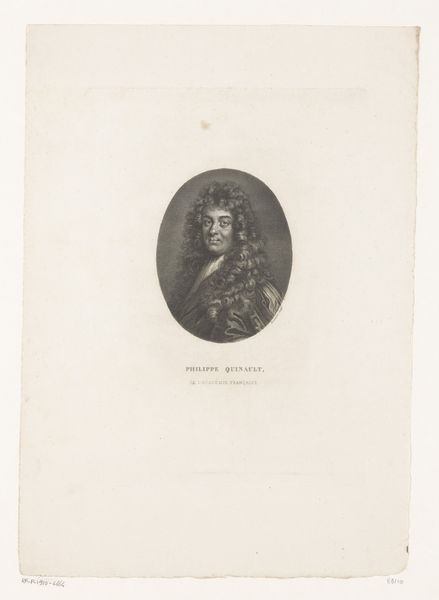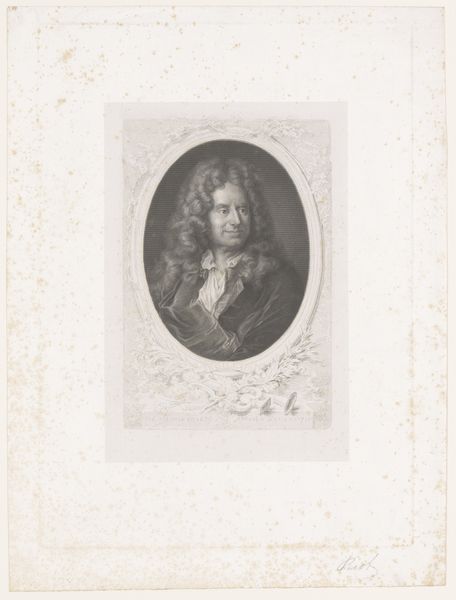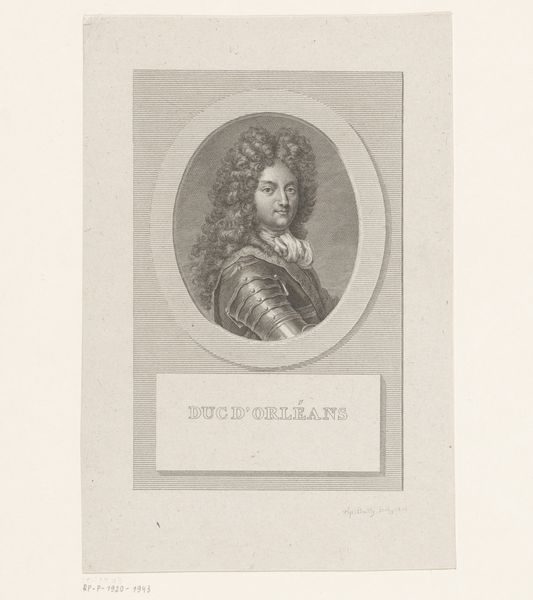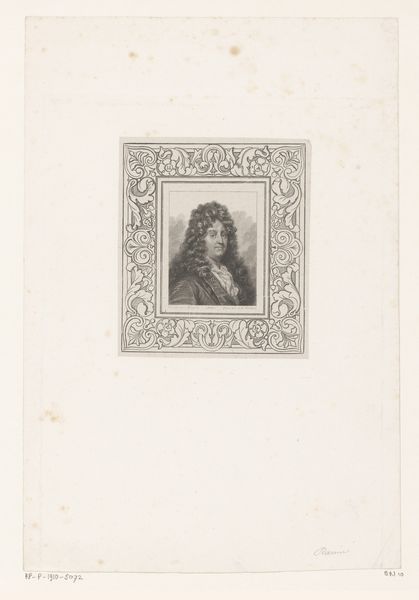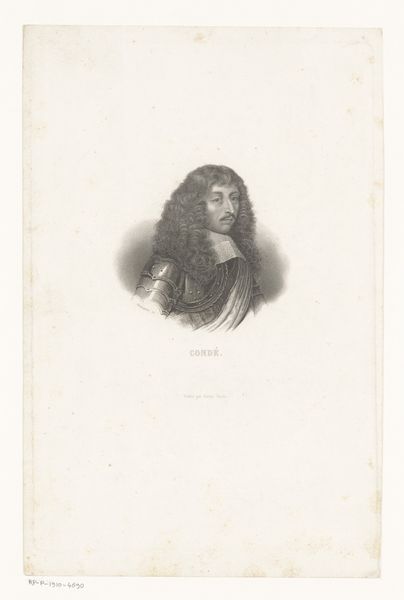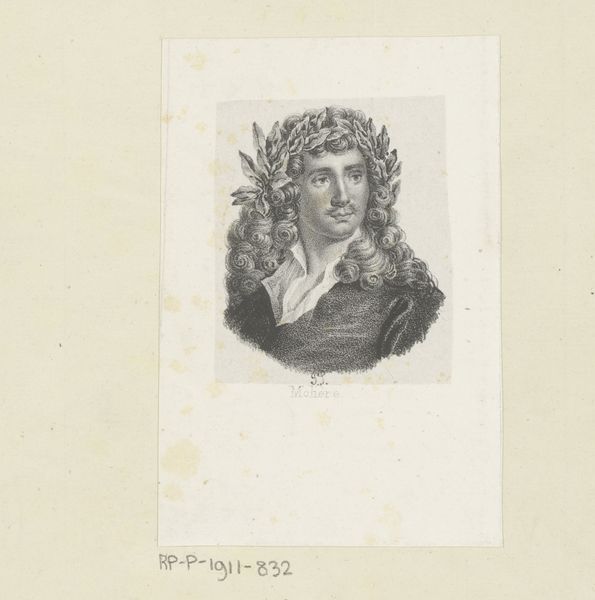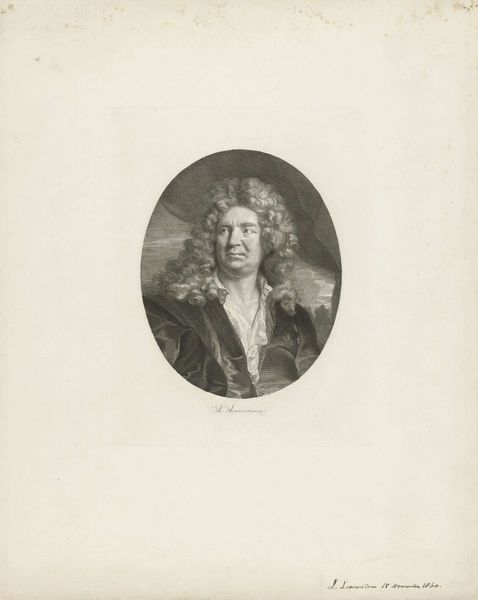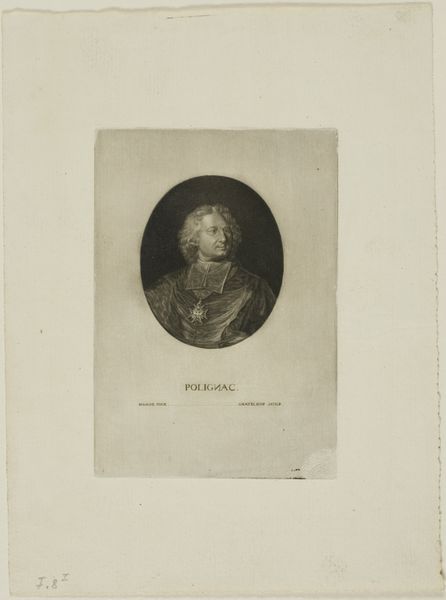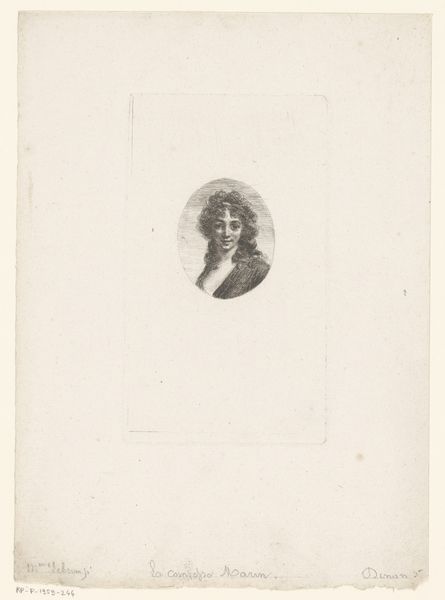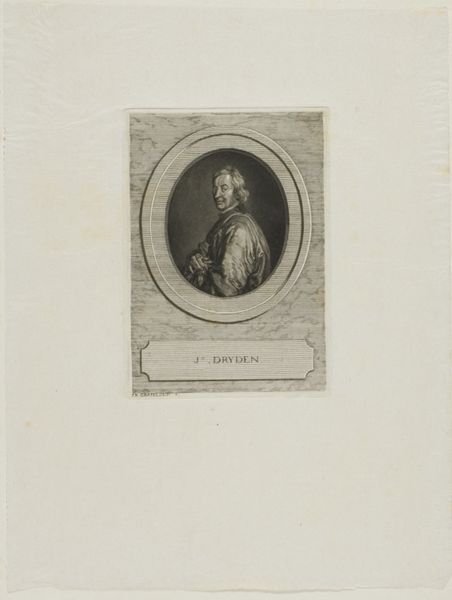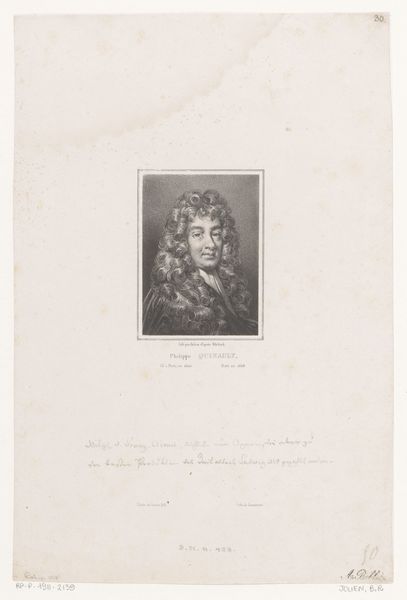
print, engraving
#
portrait
# print
#
history-painting
#
engraving
#
realism
Dimensions: height 130 mm, width 85 mm
Copyright: Rijks Museum: Open Domain
Curator: This print, housed here at the Rijksmuseum, is titled "Portret van Jean Racine," dating from somewhere between 1841 and 1885, credited to Joseph Schubert. The engraving really captures the details, even on this small scale. Editor: My immediate impression is that it's rather stately. The oval framing adds to the formal feel. The lines of the engraving seem meticulously created. It appears quite refined, almost romantic. Curator: Well, portrait engravings like this one had a definite social function. Disseminating images of prominent figures like Racine, ensuring a kind of visual literacy amongst the educated elite. Think about the production itself, the engraver's painstaking labor replicating an existing painting or drawing for mass distribution. Editor: It's interesting to consider how such images were consumed. They speak volumes about how portraiture functioned within 19th-century society. Was it displayed in public spaces, offices, private residences? Each setting suggesting different readings and degrees of accessibility. Curator: Absolutely, it reveals how deeply portraiture penetrated daily life via mass production. Engravings democratized representation, shifting artistic value from the singular "original" artwork to reproducible copies. The making of the image becomes crucial here. We are talking of how the artist and printing facilities adapted tools and technical skills to allow society access. Editor: Precisely! It made those once unattainable individuals visible, turning the subject into something more than just their name. Curator: Though reproduced widely, access still was very determined through consumerism practices. This shows the complexities of production that sometimes elude simpler assessments of historical reception. Editor: True. Thinking about the social narratives woven around images becomes so necessary. We also must recognize, in turn, our own historical moment and the means through which that may influence current understanding. Curator: An exercise in thinking with process that expands how we approach a finished artwork. Editor: It underscores that art history isn’t a set of dates and names but a study of the visual interplay within a much larger web of social exchange.
Comments
No comments
Be the first to comment and join the conversation on the ultimate creative platform.
